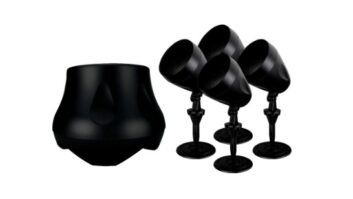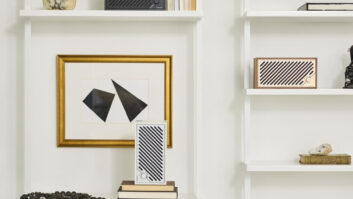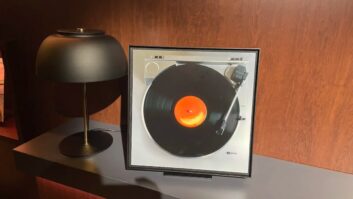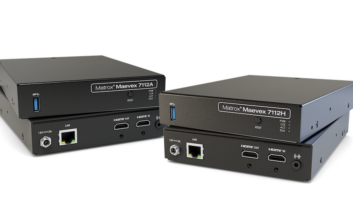TORQUAY, UNITED KINGDOM — Stereo sound emanating from a single-enclosure speaker and delivering a room-size sweep spot is the promise of Airsound, a company that is licensing its technology to consumer electronics companies and is also marketing select products through a subsidiary.
Products from the Orbitsound subsidiary include a stereo soundbar and an iPod sound system. The company is shopping the products to U.S. distributors.
Airsound’s technology, called Airsound, also appears in a prototype in-wall/in-ceiling speaker whose design is available for license to residential and commercial audio suppliers. The speaker, called Walls of Sound, is completely flush with a wall or ceiling. Outdoor speakers are also potential applications.
Neither Airsound nor its subsidiary has a U.S.-based office.
Airsound-equipped speakers, which incorporate amplifier and non-DSP-based electronic processing, work like this: A front-firing main driver is complemented by two smaller side-firing speakers that operate in reverse polarity. The front speaker reproduces the main signal, and the side drivers deliver spatial signals. Circuitry in the amplifier derives a main signal and separate spatial signal from a regular left- and right-channel stereo input. The circuitry adds the left and right stereo channels together (L+R) to create the main signal, which incorporates all of the information common to both the left- and right-channel inputs. The main signal is sent to the front driver. The circuitry also subtracts the left signal from the right signal, “canceling out all of the common signal information and leaving just the spatial information,” then sends the spatial signal to the side drivers, a company whitepaper said.
This method “provides far more of the natural positioning cues our hearing depends upon in the real world than with discrete left- and right-channel reproduction,” the whitepaper added.
Because the configuration delivers a room-size sweet spot from a single enclosure, it allows for flexible speaker placement, the company noted. The technology delivers “an evenly balanced stereo soundfield of uniform frequency and phase response throughout a room rather than at a fixed limited point between two speaker cabinets,” which must be “widely spaced apart in order to create a proper soundfield,” the white paper said. “All localization cues contained in the source signal are reproduced and perceived accurately at all positions throughout the room.”
In addition, the technology enhances clarity and intelligibility because, with sound emanating from a single enclosure, “there are no time, phase and frequency-response anomalies that are inherent with separate left- and right-channel speaker systems,” the white paper said. A single speaker enclosure, the company explained, “eliminates the frequency node and cancellation ‘comb filter’ effects resulting from separate left and right loudspeakers.” In addition, “the audio-path lengths to the ears of the listener are proportionally the same, irrespective of the position of the listener with respect to the loudspeaker unit. This provides improved clarity of sound by the elimination of path-length phase distortion common with all left/right loudspeaker systems,” the white paper said.
Another advantage of the technology is power-consumption efficiency, given that the main and spatial channels together draw “significantly less power” than conventional two channel stereo systems, the company said. The spatial channel on average needs only 20 percent of the RMS power consumption of the main channel, yielding a 40-percent aggregate savings over conventional stereo systems.
“Given the component cost saving and the really significant improvement in fidelity that airSOUND brings to low-cost audio devices, such as home cinema in a box and PC speaker systems, the biggest potential market lies in low-end mass market CE products,” a spokesman told TWICE. Nonetheless, the technology also applies to concert sound PA systems, which would enable stereo sound “to be heard identically by an audience throughout an auditorium, a currently unachievable scenario that means most concert sound is effectively mono,” he added.
One of two Orbitsound products incorporating Airsound technology is the $349-suggested Aura iPod-docking speaker system, which consists of a standalone dock and single-cabinet amplified speaker. The dock’s preamp stage features two triode tubes, 3.5mm input and output, video output, on-chassis rotary volume control, and IR remote that controls volume, mute, on/off, next/previous-track selection, scan and pause. The 7.9-inch by 4.9-inch by 10-inch speaker uses a two-way driver design for the main channel. The speaker is said to be conservatively rated at 20 watts. Pricing was unavailable.
The $599-suggested T12 sound bar consists of an iPod-docking bar, which delivers the main and spatial channels, and a separate powered subwoofer. It comes with remote to control the bar and iPod. Additional details were unavailable.













